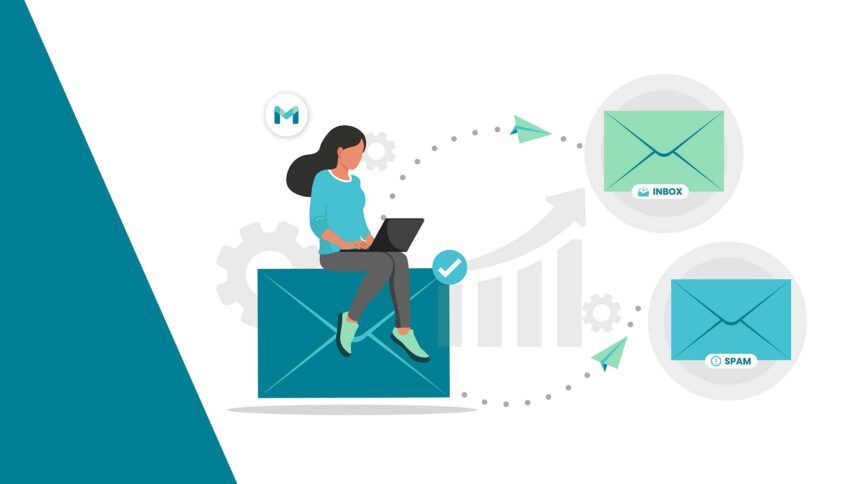In today’s digital age, email marketing remains one of the most effective ways to engage with customers, promote products, and drive sales. However, no matter how well-crafted your emails are, they won’t have any impact if they don’t even reach your recipient’s inbox. This is where email deliverability comes into play. In simple terms, email deliverability refers to the ability of your emails to land in the inbox instead of getting stuck in the spam or junk folder. For businesses relying on email marketing, ensuring high email deliverability is crucial.
When emails don’t make it to the inbox, your marketing campaigns suffer, and your engagement rates drop. It’s essential to understand the factors that impact email deliverability so you can improve your chances of reaching your target audience effectively. This article will guide you through some best practices and strategies that can boost your email deliverability and help ensure that your messages always hit their mark.
What Affects Email Deliverability?
To improve your email deliverability, it’s important to first understand what factors influence it. Several elements play a role in whether your emails are successfully delivered or blocked. Some of these factors include:
Sender Reputation: Email service providers (ESPs) such as Gmail, Yahoo, and Outlook evaluate your sender reputation based on the quality of your email list, your sending behavior, and your engagement rates. If you frequently send emails to invalid addresses or receive high complaint rates, your sender reputation will suffer, making it more likely for your emails to be marked as spam.
Spam Filters: ESPs use sophisticated spam filters to block unwanted or malicious emails. These filters assess various signals, including the subject line, email content, and sender information. If your emails contain certain red flags or trigger spam filters, they may be routed to the junk folder.
Engagement Metrics: The level of engagement your recipients have with your emails can also affect deliverability. High open rates, click-through rates, and low bounce rates indicate to ESPs that your emails are relevant and wanted. On the other hand, low engagement signals that your emails may not be of interest to your audience and may harm your reputation.
Authentication Protocols: ESPs require email senders to authenticate their emails to ensure they are legitimate. If your domain doesn’t have proper authentication protocols in place, such as SPF, DKIM, and DMARC, your emails are more likely to be flagged as spam.
Email List Quality: A clean and engaged email list is essential for good deliverability. If your list is outdated, contains invalid email addresses, or includes unengaged users, it will hurt your sender reputation. Regularly cleaning and segmenting your list helps maintain high-quality contacts and improves your chances of reaching the inbox.
Best Practices for Improving Email Deliverability
Now that you have a better understanding of what affects your email deliverability, let’s dive into some of the best practices that can help you enhance your chances of reaching the inbox.
- Maintain a Clean Email List
One of the most important factors in ensuring good email deliverability is maintaining a clean email list. If you’re sending emails to outdated or invalid addresses, you’ll not only experience high bounce rates but also risk damaging your sender reputation. Regularly clean your email list by removing inactive users, unsubscribes, and invalid email addresses. This can significantly improve your deliverability.
Moreover, it’s essential to implement a double opt-in process for new subscribers. By confirming that they genuinely want to receive your emails, you ensure that your list consists of people who are genuinely interested in your content. This reduces the chances of your emails being flagged as spam.
- Authenticate Your Emails with SPF, DKIM, and DMARC
Email authentication protocols like SPF (Sender Policy Framework), DKIM (DomainKeys Identified Mail), and DMARC (Domain-based Message Authentication, Reporting, and Conformance) help prove that you are the legitimate sender of your emails. These protocols protect your brand from being used in phishing attacks and help improve your deliverability.
By configuring these protocols, you make it more difficult for spammers to impersonate your brand. Most ESPs check for these authentication methods before delivering your emails to the inbox. If your emails fail to pass these checks, they are more likely to be flagged as spam or blocked altogether.
- Optimize Your Content for Spam Filters
Spam filters are becoming increasingly sophisticated, and certain words or phrases can trigger them. Avoid using overly promotional language or excessive punctuation, like multiple exclamation marks or all caps. Keep your subject lines and content relevant, clear, and professional.
Also, balance the text-to-image ratio in your emails. Too many images and too little text can make your emails appear suspicious to spam filters. By ensuring a healthy balance between text and visuals, you improve your chances of passing spam filter checks.
- Segment Your Email List
Segmentation is key to ensuring high engagement rates, which directly impact your email deliverability. Rather than sending the same message to your entire list, segment your contacts based on criteria like location, interests, past purchases, or engagement level. By sending targeted and personalized content, you’ll increase the likelihood of your recipients opening your emails and interacting with them, which boosts your sender reputation.
In addition, segmentation allows you to send more relevant offers to the right people, which reduces the chances of recipients marking your emails as spam. This is an important step in maintaining a strong relationship with your audience and improving email deliverability over time.
- Test and Monitor Your Deliverability
It’s essential to regularly test your emails before sending them to your entire list. There are various tools available that allow you to check how your email is likely to perform across different ESPs and devices. These tools can help you identify any issues that could impact deliverability, such as broken links or problematic formatting.
In addition, monitor your email metrics, including bounce rates, open rates, and complaint rates. High bounce rates or complaints may indicate problems with your email list or content, and addressing these issues can help improve your deliverability.
Why Engagement Metrics Matter for Email Deliverability

Engagement metrics are a crucial aspect of email deliverability, as ESPs use them to determine how interested your audience is in your emails. High engagement rates signal to ESPs that your emails are relevant and valuable, while low engagement rates indicate that recipients are not interested in your messages.
To improve your engagement metrics, make sure your emails are well-crafted, visually appealing, and contain valuable content. Personalizing your emails and using dynamic content can also increase engagement, as it makes the email more relevant to each recipient. Additionally, send emails at optimal times based on your audience’s behavior and preferences to increase the chances of them being opened.
Avoiding Spam Traps and Blacklists
Spam traps are email addresses used by ESPs and blacklist providers to identify spammers. These addresses are not associated with real users but are included in email lists as a way to catch those who send unsolicited emails. If you send emails to spam traps, you risk being blacklisted and having your emails blocked by ESPs.
To avoid spam traps, it’s important to regularly clean your email list and avoid purchasing email lists from third parties. Make sure that your opt-in process is clear and that you are only sending emails to those who have explicitly requested to receive them.
Conclusion: Ensuring Your Emails Reach the Inbox
Achieving high email deliverability is essential for any successful email marketing strategy. By following best practices such as maintaining a clean email list, authenticating your emails, optimizing your content for spam filters, and monitoring engagement metrics, you can significantly improve your chances of reaching your recipients’ inboxes. Remember, email deliverability is a long-term process that requires ongoing effort and attention. By consistently following these strategies, you’ll not only boost your deliverability but also improve your email marketing results and grow your business effectively.
